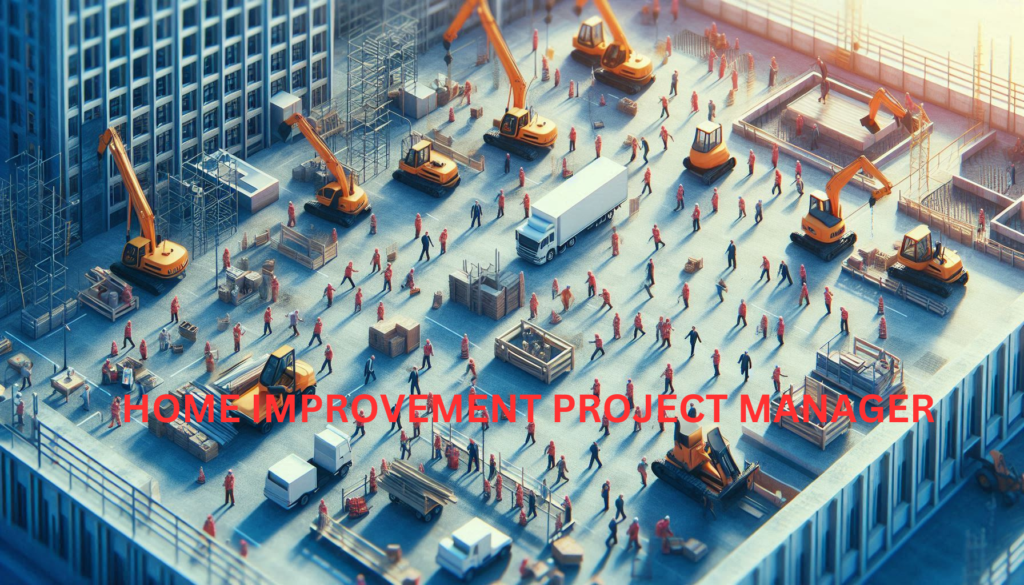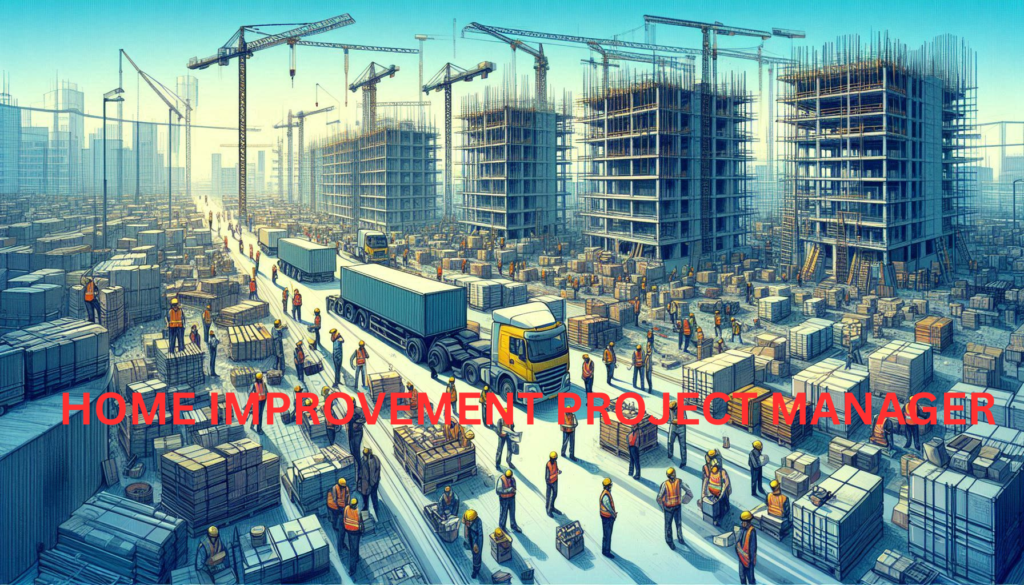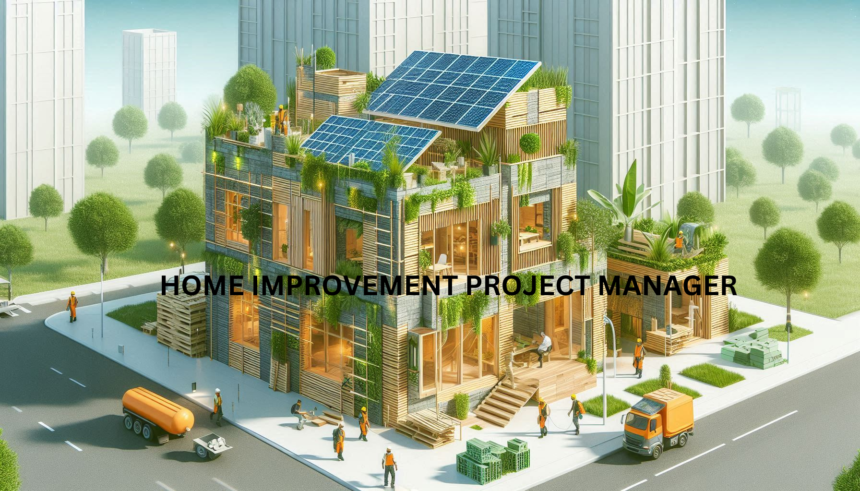Home improvement project manager are common in today’s world, showing how people want to make their homes better. But being a home improvement project manager comes with many hidden difficulties that can affect how well these projects turn out. As we move into 2024, new trends, technologies, and economic changes are adding even more complexity. This article looks at these hidden challenges and provides tips and strategies to handle them well.
Evaluation of Home Improvement Project Manager in 2024
Planning and Preparation
1. Detailed Planning
- Evaluation: While careful planning is crucial for any project, the ever-changing aspects of home improvement project manager often lead to unexpected problems. A plan that doesn’t allow for changes can quickly become a disadvantage.
- Recommendation: Home improvement project manager should develop adaptable plans with backup options to effectively manage unforeseen changes.
2. Budget Constraints
- Evaluation: Money limits are getting worse because of rising prices and problems with getting supplies, making it hard to stick to the original financial plan.
- Recommendation: Check and update budget plans often, and keep some extra money aside for unexpected costs.
3. Stakeholder Expectations
- Evaluation: Handling the different expectations of homeowners, contractors, and suppliers needs good negotiation and communication skills.
- Recommendation: Set up clear ways to talk and give regular updates so everyone involved is on the same page and knows what’s happening.
Budget Management
1. Escalating Costs
- Evaluation: The increasing prices of supplies and labor can cause budget issues and might require changes to the project’s quality or size.
- Recommendation: Keep an eye on market changes and try to get fixed-price deals with suppliers to help avoid higher costs.
2. Accurate Estimations
- Evaluation: Getting precise cost estimates is getting harder because markets are changing a lot.
- Recommendation: Use past data and special tools to analyze the market, which can help make cost estimates more accurate.
3. Financial Oversight
- Evaluation: Good financial supervision is very important to avoid going over budget and to make sure money is used wisely.
- Recommendation: Set up strong financial management tools to monitor spending as it happens and change budgets when necessary.
Risk Management
1. Identifying Risks
- Evaluation: The fast changes in the Home improvement project manager industry make it hard to see all possible dangers.
- Recommendation: Do thorough risk checks and keep up with industry changes to spot and reduce risks early.

2. Mitigating Risks
- Evaluation: Creating and using good ways to handle risks is important to stop problems from happening in projects.
- Recommendation: Make clear plans for managing risks and give people jobs to watch for and fix certain risks.
3. Contingency Planning
- Evaluation: Having a strong backup plan is important to handle unexpected problems and keep projects moving forward.
- Recommendation: Set aside resources for these plans and teach the project team how to handle emergencies well.
Communication and Collaboration
1. Coordination
- Evaluation: Managing different groups of people needs good project tools and clear ways to talk to each other.
- Recommendation: Use project software to make communication easier and make sure everyone has the latest information.
2. Transparency
- Evaluation: Keeping things clear helps avoid confusion and builds trust with everyone involved.
- Recommendation: Keep everyone informed about how the home improvement project manager is going and let them know if there are any changes to what we’re doing or when we’ll finish.
3. Feedback Mechanisms
- Evaluation: Setting up good ways to give and receive feedback helps find and fix problems quickly.
- Recommendation: Ask for regular feedback from everyone involved and use their ideas to make the project better.
Technological Integration
1. Adoption of New Tools
- Evaluation: Using new Home improvement project manager tools can make things run smoother, but people need to learn how to use them well.
- Recommendation: Spend on training so the project team can use the new tools properly.
2. Smart Home Integration
- Evaluation: People want smart home features, so it’s important to know how to add these technologies to home projects.
- Recommendation: Work with technology experts and keep up with the newest smart home ideas to offer creative solutions.
3. Data Management
- Evaluation: Handling the large amounts of data produced by today’s project management tools can be very challenging.
- Recommendation: Use data management systems to keep the data well-organized, safe, and simple to access.
Quality Control
1. Maintaining Standards
- Evaluation: Maintaining high-quality work and materials can be difficult when working with limited funds.
- Recommendation: Set up strong quality control rules and do regular checks to keep up the high standards.
2. Regular Inspections
- Evaluation: Regular inspections take a lot of time, but they are important to make sure everything meets quality standards.
- Recommendation: Plan inspections at key points in the project to quickly find and fix any problems.
3. Hiring Skilled Professionals
- Evaluation: It’s getting harder to find and keep skilled workers who can do excellent work.
- Recommendation: Provide good pay and chances for career growth to bring in and keep the best people.
Sustainability and Environmental Concerns
1. Eco-Friendly Materials
- Evaluation: Using environmentally friendly materials can cost more and be harder to find.
- Recommendation: Investigate and form connections with suppliers of sustainable materials to get better prices and more options
2. Energy Efficiency
- Evaluation: Using energy-saving methods needs extra planning and special skills.
- Recommendation: Keep up with the newest energy-saving tech and include it in your project plans from the start.
3. Waste Management
- Evaluation: Good waste management is very important for reducing the harm to the environment from home improvement project manager.
- Recommendation: Create plans for managing waste that focus on recycling and proper disposal methods.

Key Takeaways: Home Improvement Project Manager in 2024
1. Flexible Planning: Making plans that can change and including backup options for unexpected problems.
2. Budget Management: Keeping budget estimates up-to-date and having a reserve fund helps control expenses.
3. Stakeholder Communication: Using clear methods and regular updates to keep everyone on the same page and manage their expectations.
4. Cost Control: Watching market changes and getting fixed-price contracts can help avoid higher costs for materials and labor.
5. Risk Management: Doing thorough risk checks and planning for possible issues in advance is important.
6. Technology Integration: Investing in training for new project tools and staying informed about smart home tech.
7. Quality Control: Setting strict rules and doing regular checks to keep quality high.
8. Sustainability: Working with suppliers of green materials and starting with energy-saving solutions from the beginning.
9. Data Management: Set up methods to manage and protect project information in an orderly and secure way.
10. Skilled Workforce: Provide good pay and chances for growth to bring in and keep the best people.
Case Study: Home Improvement Project Manager Success
Project Overview:
A project to update a kitchen and living area in a suburban house was planned to make them more modern and useful. The person in charge had to home improvement Project manager the design, budget, and work being done.
Challenges:
1. Budget Constraints: The first cost estimates were higher than the client’s budget because the prices of materials went up.
2. Scope Changes: The homeowners changed their plans halfway through the project, deciding to add more features, such as smart home technology.
3. Stakeholder Communication: Keeping everyone, including the homeowners, contractors, and suppliers, happy and informed was difficult.
Strategies Implemented:
1. Flexible Planning: The project manager created a step-by-step plan to allow for changes and focus on important improvements.
2. Budget Reviews: A special savings account was set up to cover unexpected costs, and budget checks were done weekly to keep expenses under control.
3. Enhanced Communication: Weekly meetings were scheduled with everyone involved to share progress and collect opinions, promoting openness and teamwork.
Outcomes:
- The project finished on schedule and stayed within the updated budget
- Homeowners were very happy with how the redesigned areas looked and worked.
- Adding smart home features increased the house’s worth and attractiveness.
Key Takeaways:
This example shows how important it is to be flexible, communicate well ahead of time, and plan a budget carefully when managing home improvement projects. By being ready to change and keeping good communication, project managers can handle problems well and get good results.

Impact of Hidden Challenges on Home Improvement Project Manager
1. Supply Chain Disruptions
- Impact on Project Timelines: Delays in material availability can extend project timelines, leading to frustration for clients and contractors.
- Cost Implications: Increased costs due to sourcing materials from alternative suppliers can strain budgets.
Table 1: Impact of Supply Chain Disruptions
| Aspect | Impact | Mitigation Strategies |
|---|---|---|
| Material Availability | Delays in project timelines | Build relationships with multiple suppliers |
| Cost | Increased costs due to alternative sourcing | Bulk purchasing and early ordering |
| Project Scheduling | Uncertainty in project planning | Flexible scheduling and buffer periods |
2. Labor Shortages
- Quality of Work: Insufficient skilled labor can lead to compromised quality and increased errors.
- Increased Labor Costs: Higher demand for skilled workers can inflate labor costs, impacting overall project budgets.
Table 2: Labor Shortages
| Aspect | Impact | Mitigation Strategies |
|---|---|---|
| Quality of Work | Lower quality and increased errors | Implement training programs |
| Labor Costs | Increased wages due to high demand | Partner with vocational schools |
| Project Timelines | Extended project durations | Use of subcontractors and temporary labor |
3. Regulatory Changes
- Compliance Risks: Frequent changes in regulations may result in fines or project stoppages if not adequately addressed.
- Project Delays: Navigating new regulations can cause delays as project managers adjust plans to comply.
Table 3: Regulatory Changes
| Aspect | Impact | Mitigation Strategies |
|---|---|---|
| Compliance | Risk of fines and project stoppages | Regular training and updates on regulations |
| Project Planning | Need for adjustments to comply with new codes | Engage with regulatory bodies early in the process |
| Budget | Additional costs for compliance | Allocate budget for potential regulatory changes |
4. Technological Integration
- Training Needs: Project managers may need to invest time and resources in training for new technologies, impacting efficiency.
- Resistance to Change: Some team members might resist adopting new tools, leading to inconsistencies in project execution.
Table 4: Technological Integration
| Aspect | Impact | Mitigation Strategies |
|---|---|---|
| Training Needs | Time and resources required for training | Schedule regular training sessions |
| Resistance to Change | Inconsistent adoption among team members | Provide incentives for early adopters |
| Project Efficiency | Initial slowdowns due to learning curve | Pilot programs before full-scale implementation |
5. Client Expectations Management
- Relationship Strain: When what the client wants doesn’t match what the project can do, it can make the client unhappy and cause problems between the client and the people working on the project.
- Increased Conflict: Unresolved expectations may result in conflicts, impacting overall project morale.
Table 5: Client Expectations Management
| Aspect | Impact | Mitigation Strategies |
|---|---|---|
| Client Satisfaction | Misalignment leads to dissatisfaction | Set clear expectations and regular updates |
| Relationship Strain | Strained relationships due to unmet expectations | Use detailed contracts and transparent communication |
| Conflict Resolution | Increased conflicts during projects | Implement conflict resolution protocols |
6. Budget Overruns
- Financial Strain: Exceeding budgets can lead to financial strain on both project managers and clients, potentially affecting future projects.
- Reputation Damage: Consistent budget overruns can damage a project manager’s reputation in the industry.
7. Environmental Sustainability
- Client Preferences: A lack of sustainable practices may lead to loss of clients who prioritize eco-friendly options.
- Regulatory Compliance: Failure to adopt sustainable practices can result in non-compliance with emerging environmental regulations.
8. Risk Management
- Increased Vulnerability: Poor risk management can lead to unforeseen challenges that disrupt project flow and outcomes.
- Resource Allocation: Ineffective risk management can lead to misallocation of resources, further complicating projects.
9. Quality Control
- Client Dissatisfaction: Inconsistent quality across trades can lead to client dissatisfaction and potential rework.
- Long-Term Costs: Compromised quality may result in long-term maintenance costs and damage to a project’s reputation.
10. Time Management
- Increased Stress: Managing multiple projects can lead to increased stress for project managers and team members.
- Reduced Efficiency: Poor time management can reduce overall efficiency, leading to project delays and missed deadlines.
Conclusion
In 2024, home improvement project manager encounter many difficult problems that affect their work and results. These problems include issues with getting supplies, not having enough workers, changing rules, and using new technology. To handle these challenges, managers need to plan ahead and manage their projects well.These problems can cause many issues: delays can upset clients, going over budget can cause financial trouble, and poor quality can hurt a company’s reputation. Also, there’s more focus on being environmentally friendly, which adds another level of difficulty for managers to deal with to meet client and legal needs.
To succeed in this field, home improvement project managers need to be flexible, keep learning, and use technology well. They should also communicate effectively with clients and teams. By understanding and solving these less obvious problems, they can improve project outcomes, keep clients happy, and stand out in a competitive market. Ultimately, facing these challenges with foresight and good planning will lead to a stronger and more successful future in home improvement.
FAQ
Q1: How do supply chain disruptions affect home improvement projects?
- A1: Supply chain disruptions can lead to delays in obtaining materials, which can extend project timelines and increase costs as project managers may need to source materials from more expensive or distant suppliers.
Q2: What impact does a labor shortage have on home improvement projects?
- A2: Labor shortages can result in a lack of skilled workers, leading to lower quality work and potential errors. Additionally, the high demand for skilled labor can drive up labor costs, straining project budgets.
Q3: How can regulatory changes impact Home improvement project manager?
- A3: Frequent changes in building codes and regulations can cause compliance risks and project delays. Project managers must stay informed and adjust plans accordingly to avoid fines or project stoppages.
Q4: What are the challenges of integrating new technologies in home improvement projects?
- A4: Integrating new technologies requires investment in training and can encounter resistance from team members. This can slow down project execution and create inconsistencies if not all team members are on board with the new tools.
Q5: How do client expectations affect Home improvement project manager?
- A5: Misaligned client expectations can lead to dissatisfaction and strained relationships. Effective communication and transparency are crucial to managing expectations and avoiding conflicts.
Q6: What are the consequences of budget overruns in home improvement projects?
- A6: Budget overruns can lead to financial strain for both project managers and clients. They can also damage the project manager’s reputation, making it harder to secure future projects.
Q7: Why is environmental sustainability a challenge in home improvement projects?
- A7: Clients increasingly demand sustainable practices, and failure to incorporate these can lead to loss of business. Additionally, non-compliance with environmental regulations can result in fines and legal issues.
Q8: How important is risk management in home improvement project management?
- A8: Effective risk management is crucial to identifying and mitigating potential challenges before they disrupt the project. Poor risk management can lead to resource misallocation and project delays.
Q9: What is the impact of poor quality control in home improvement projects?
- A9: Poor quality control can lead to client dissatisfaction, increased rework, and long-term maintenance costs. Maintaining high quality standards is essential to project success and client satisfaction.
Q10: How does time management affect home improvement project manager?
- A10: Poor time management can lead to increased stress, reduced efficiency, and missed deadlines. Effective prioritization and time management are essential to handle multiple projects simultaneously.
